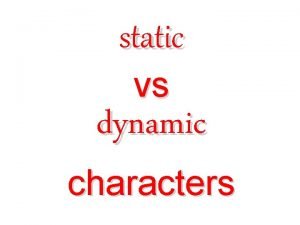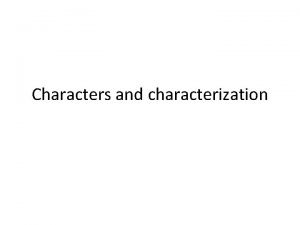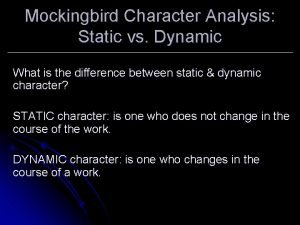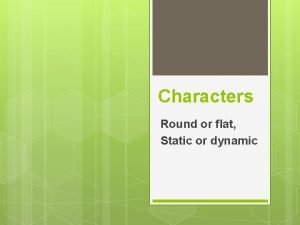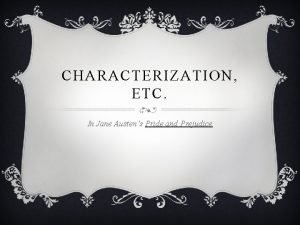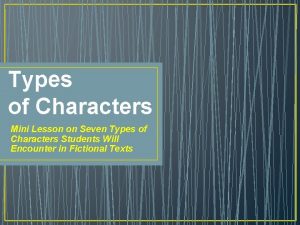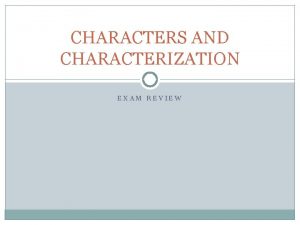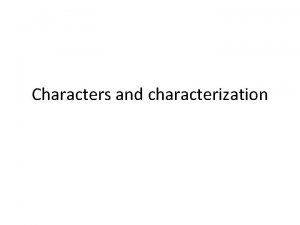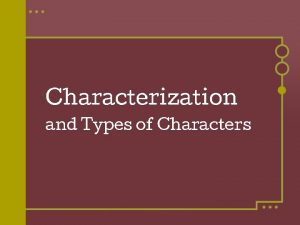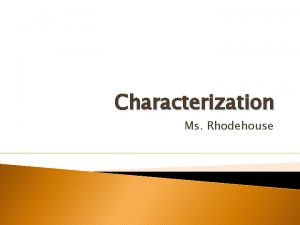Characters and Characterization Types of Characters Dynamic A









- Slides: 9

Characters and Characterization

Types of Characters: • Dynamic = A character that changes over the course of the story • Static = A character that does not change over the course of the story

Characterization • Characterization—the process of revealing the personality of a character in a story.

Direct Characterization A direct and specific statement is made by either the author or the narrator about a character’s • • • Appearance Thoughts Feelings Actions Reaction The description of a character is directly stated in the text and can be read word for word

Indirect Characterization The reader must use clues from the text and draw upon their own experiences to make inferences about a character and their personal qualities • The description of the character is NOT directly stated within the text.

4 Methods of Characterization 1. Appearance (Author/Narrator’s Description) • An attribute can be revealed by how a character looks • Direct Characterization Example: – Megan was six feet tall, making her the tallest girl in her class. • Indirect Characterization Example: – His clothes were baggy and did not fit properly.

4 Methods of Characterization 2. Thoughts & Emotions • An attribute can be revealed by what a character thinks or feels • Direct Characterization Example: – Julie was excited to find out Mark was in her class. She thought that he was the cutest boy in the whole school. • Indirect Characterization Example: – Quickly scanning for her name on the team roster, Nicole’s stomach began to curl and tears welled up in her eyes until she was crying uncontrollably.

4 Methods of Characterization 3. Actions & Reactions – An attribute can be revealed by what the character does, how he/she reacts, and how others react to the character • Direct Characterization Example: – Stephen was a great hockey player and as he scored his 100 th goal of the season, the fans roared with excitement. • Indirect Characterization Example: – Gabby gazed out the window as Stephen continued to talk.

4 Methods of Characterization 4. Dialogue – An attribute can be revealed by what the character says or by what others say about him/her. • Direct Characterization Example: – “I Love Him, Diana!” • Indirect Characterization Example: – I asked her if she liked buffalo wings and all she could say was, “I didn’t know buffalos had wings!”
 Example static character
Example static character Indirect and direct characterization
Indirect and direct characterization Direct characterization example
Direct characterization example Static characterization definition
Static characterization definition What is a composite character
What is a composite character Transferered
Transferered Difference between static and dynamic characters
Difference between static and dynamic characters Round or flat character
Round or flat character Indirect characterization in pride and prejudice
Indirect characterization in pride and prejudice Confidant character example
Confidant character example
